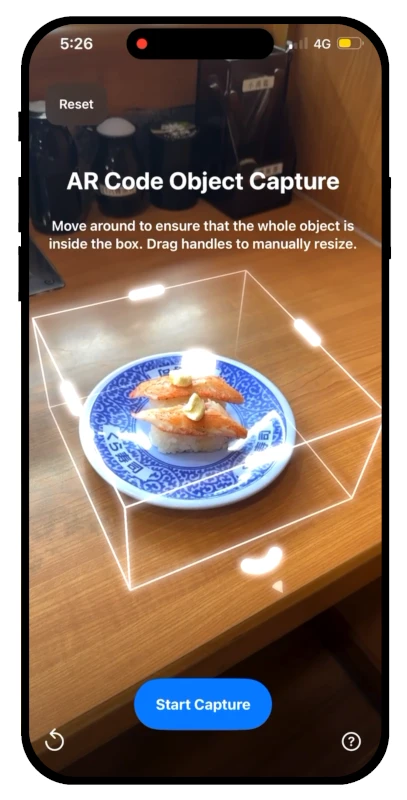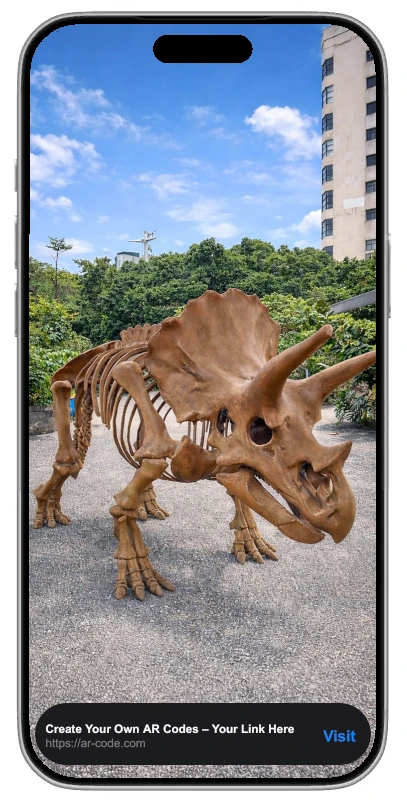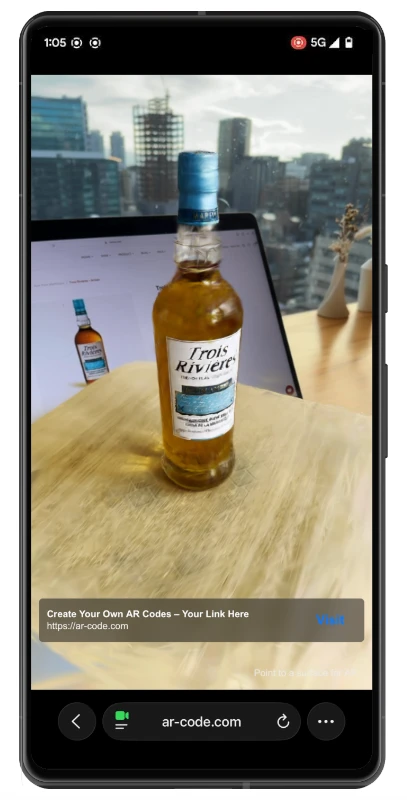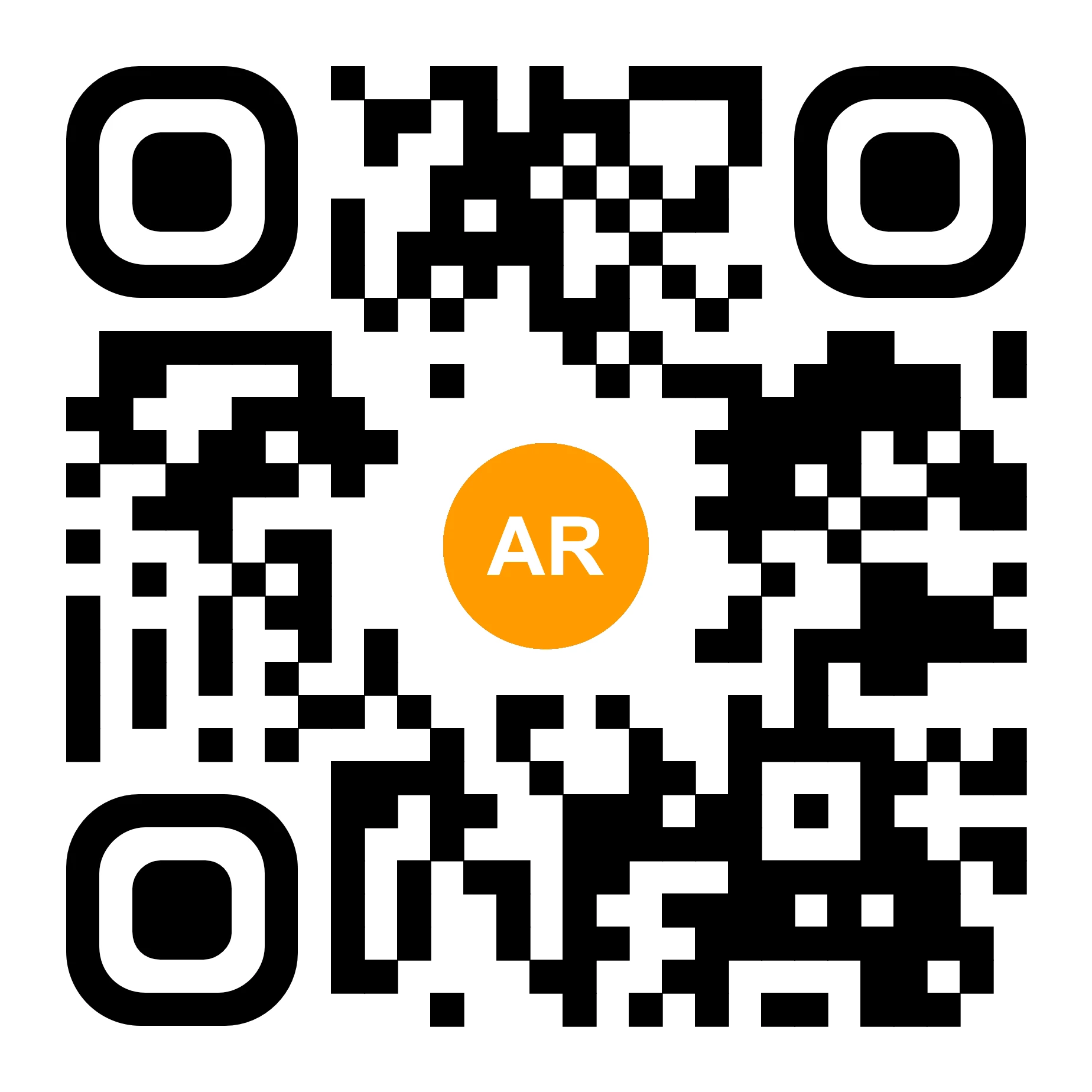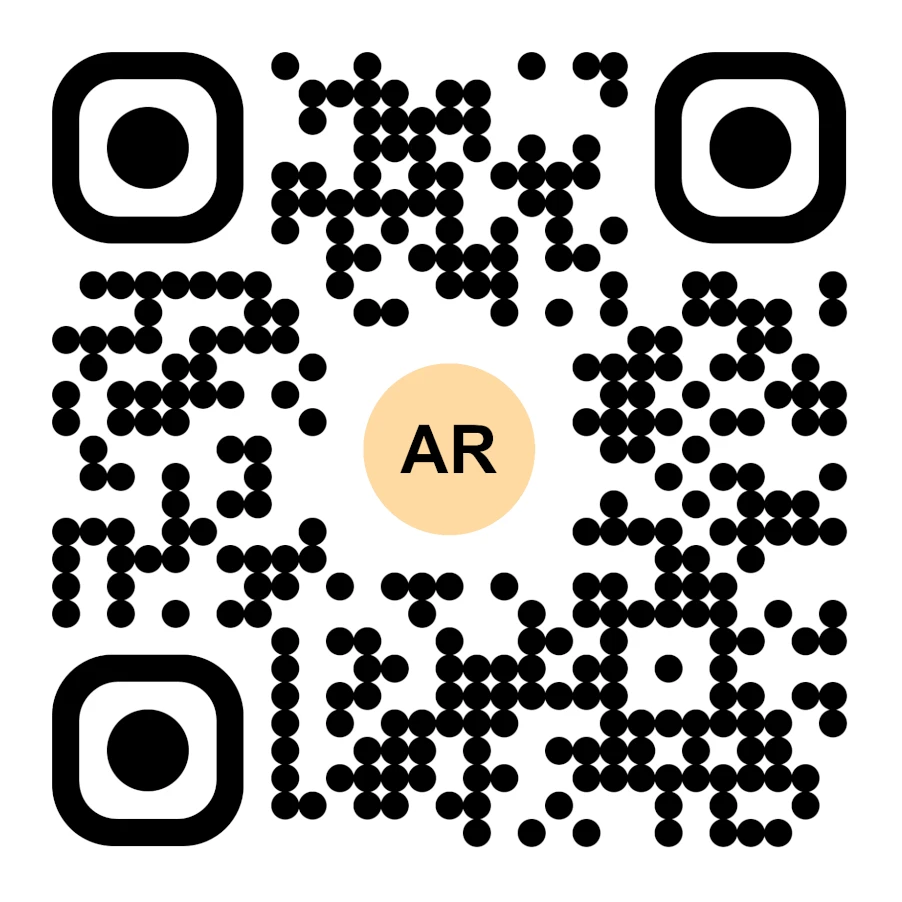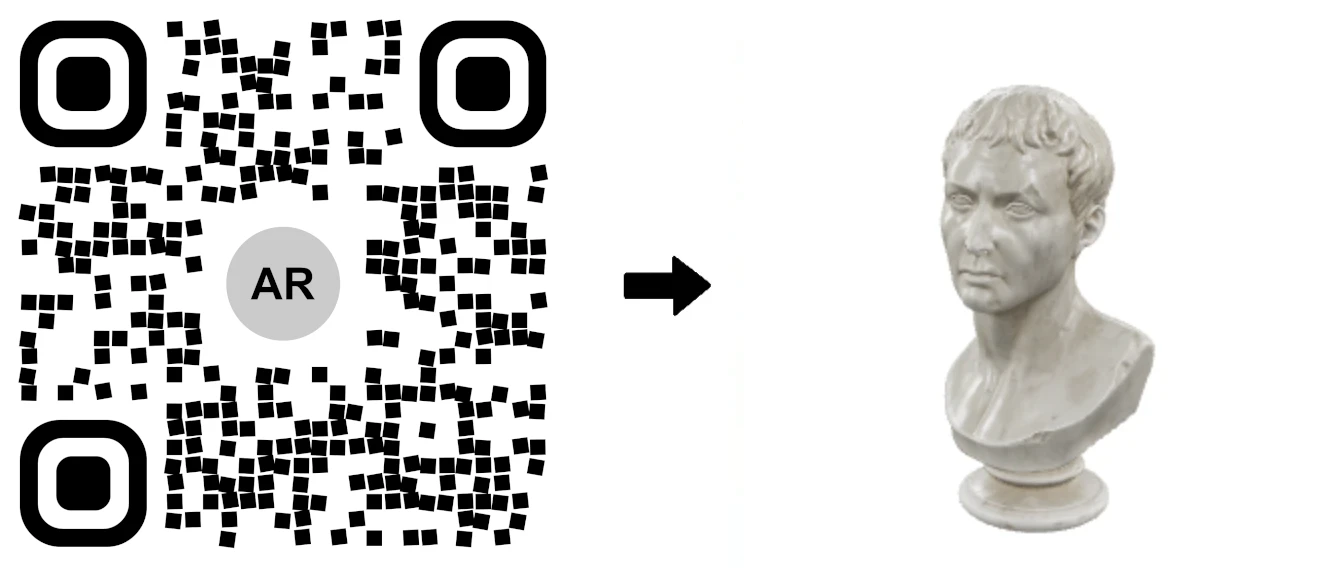Digital Transformation of Museums with AI QR Codes
AR Code Tech | 03/01/2026 |
In today's digital landscape, innovative museums and cultural organizations are reshaping visitor engagement and educational value with advanced Augmented Reality (AR) and Artificial Intelligence (AI) solutions. AI AR Codes are at the forefront of this transformation, enabling businesses to deliver interactive, personalized experiences that attract and retain audiences. For institutions aiming to elevate exhibitions and expand their reach, the AR Code SaaS platform offers powerful tools designed to boost engagement and open new business opportunities.
What are AI Codes?
AI Codes are the evolution of visitor engagement, surpassing QR Codes and standard AR Codes. By combining Artificial Intelligence with Augmented Reality, these codes provide instant, immersive content tailored for each user. When visitors scan an AI Code, they access AI-enhanced insights that decode and explain artwork or exhibits, resulting in impactful and memorable experiences.
The AR Code platform includes an exclusive 'AI Code Prompt Generator.' This easy-to-use solution allows curators, educators, and marketers to craft custom prompts, directing the AI’s analysis for consistently engaging and manageable visitor interactions.
Maximize your AI Code campaigns by customizing prompts and "Call AI" button text to give each visitor a highly targeted, interactive journey.

Example prompt: Analyze the image and identify the painting shown. Describe its artistic style and likely historical period. Identify the artist, title, and year if possible. If the painting is not found, suggest retaking the photo to include the artwork.
How AI QR Codes Drive Museum Visitor Engagement

Leading museums use AR Code and AI QR Codes to convert traditional exhibits into interactive, digital learning adventures. With AR Code SaaS, curators and organizations can deliver immersive visitor experiences that drive satisfaction and loyalty.
- Interactive Learning: AI Codes enable active exploration of exhibits. Visitors use their smartphones to scan and receive multimedia content, artist insights, and stories, significantly increasing engagement times.
- Personalized Tours: Tailor the visitor journey by offering recommendations based on scanned items. Personalization increases guest satisfaction and encourages repeat visits.
- Multilingual Accessibility: AI Codes provide seamless translation and localization, making exhibits accessible to international visitors.
Business Applications: AR and AI Codes in Museums
Implementing AR Code’s AI tools enables museums and cultural businesses to enhance learning, accessibility, and visitor satisfaction. These real-world benefits set your institution apart:
- Deeper Art Appreciation: AR and AI Codes unlock background details, restoration processes, and creative context right at the exhibit, enriching the visitor’s understanding.
- Augmented Educational Content: Deliver AR quizzes, games, and interactive challenges to engage students and families. This increases learning outcomes and creates standout, repeatable experiences. See more with Augmented Reality Codes in Education.
- Preservation & Virtual Access: Showcase delicate or rare collections using AR overlays, increasing access for global audiences while protecting original artifacts.
Deploying AR Code SaaS unlocks higher visitor participation, strengthens cultural preservation, and introduces interactive learning both onsite and remotely. Explore effective AR Code use cases in the museum sector at AR Code for Museum Innovation.
The Future of Museums with AR and AI Code Integration
Forward-thinking museums and cultural brands are integrating AR Code and AI to design immersive, data-driven experiences and reach wider audiences. This strategic adoption increases engagement, enhances accessibility, and sets your institution as a leader in digital storytelling and outreach.
Advance your visitor offerings with interactive 3D models of museum objects using AR Codes for enriched learning and strong, measurable business results.
AI Codes make every museum or gallery visit unique and personalized with insights that match visitors’ interests. Museums can offer tailored tours, engaging learning, and standout features that differentiate them in today’s competitive cultural space.
Leverage AR Code SaaS solutions to reach broader audiences beyond your venue. Tap into global engagement, provide accessible digital experiences, and bring cultural heritage to life with interactive, digital-first content.
Conclusion
AR Code’s AI Codes and SaaS solutions help museums and cultural businesses deliver innovative education, high-impact marketing, and engaging storytelling. These technologies increase audience loyalty, accelerate digital transformation, and elevate your organization's reputation in the cultural industry. Upgrade your digital strategy and start delivering outstanding visitor experiences with AR Code SaaS for museums.
Frequently asked questions
How do AI QR Codes improve upon traditional QR Codes?
AI QR Codes take standard QR technology to a new level with advanced AR and AI. Visitors receive personalized, interactive experiences, helping museums and organizations offer engaging, informative journeys. Learn more at How to Scan AR Codes.
How do AI Codes make museum visits better?
AI Codes transform ordinary museum visits into interactive, immersive experiences. Guests get expert analysis, real-time recommendations, multilingual content, and consistently higher engagement with every exhibit.
What are some uses of AI Codes in museums?
AI Codes boost engagement with art, add educational AR games, and enable virtual exploration of rare works. They promote collaboration, expand global reach, and position your museum as a digital trendsetter.
What does the future hold for museums using AR and AI technologies?
Museums using AR and AI technologies will offer more immersive, global experiences and stay ahead in digital cultural engagement. For further insights, visit AR Code for Museums.
AR Code Tech - Latest Blog Posts
AR Splat: A New 3D Scanning-to-Augmented Reality Solution Based on Gaussian Splatting

AR Splat by AR Code empowers businesses to create immersive, high-quality 3D environments from simple videos, streamlining 3D content creation for web-based AR experiences. Upload a walk-around video and AR Splat instantly generates a photorealistic 3D scene, accessible directly through an AR QR Code. Driven by...
AI Code’s Image Generation Redefines Product Visualization Through a QR Code Scan

AR Code is transforming Augmented Reality (AR) and Artificial Intelligence (AI) for businesses by providing AI-generated visualizations that engage customers instantly through a QR code scan. Unlock the potential of AI Code for your business and drive customer interaction with immersive AR experiences. Retailers,...
AR Code Object Capture Now Works on All iPhones and iPads No LiDAR Required
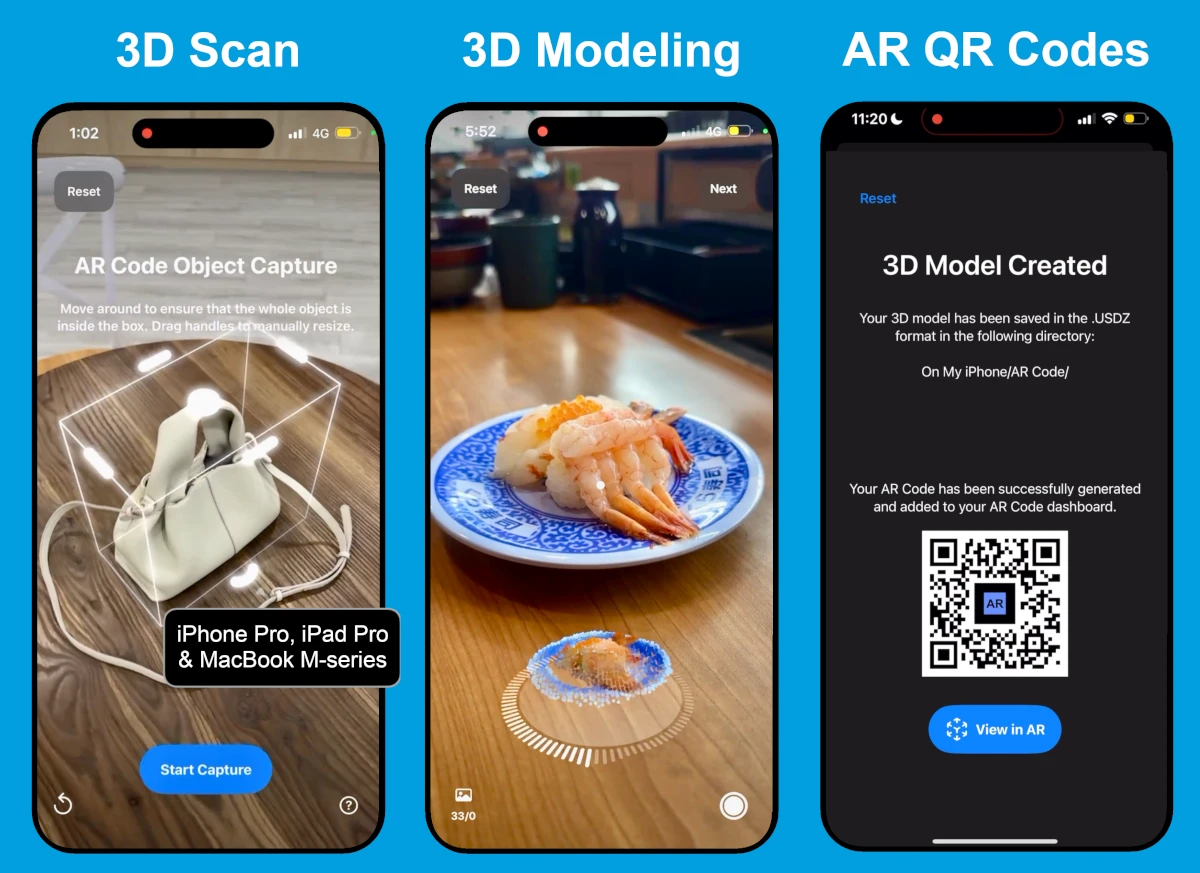
Elevate your business with immersive augmented reality using the AR Code Object Capture app. Instantly capture and create 3D models plus AR QR Codes on any iPhone or iPad, no LiDAR required, streamlining digital workflows and unlocking new customer engagement strategies. Empower your team to deliver interactive AR...
3D Scanning from Video Now Available on the AR Code Web Interface
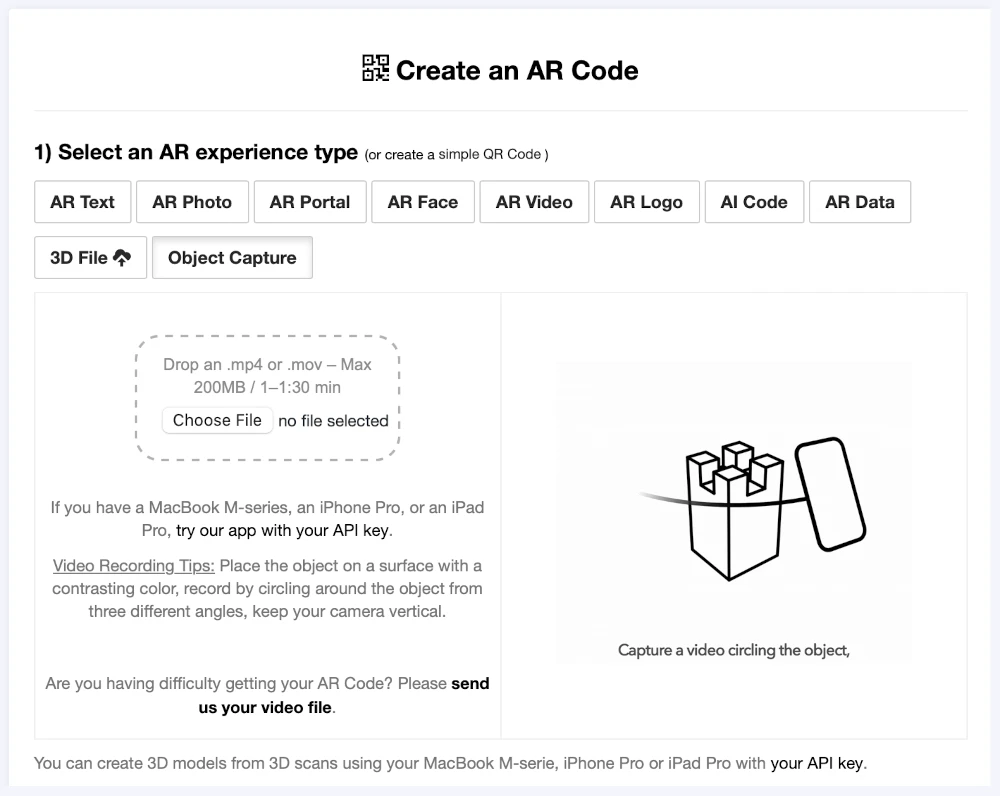
Transform your business with the innovative AR Code Object Capture solution, now available on our web platform. Boost your brand's impact by turning video-based 3D scans into immersive augmented reality content in minutes, all without technical hassles. Forget complicated apps or extra hardware. Upload a...
Guide to 3D Scanning with Our "AR Code Object Capture" Solution

Accelerate your business’s digital transformation with AR Code Object Capture—the leading SaaS platform for 3D scanning and augmented reality experiences that drive growth, engagement, and revenue. Trusted by top organizations, AR Code delivers high-quality 3D model creation for marketing, e-commerce,...
From Video to 3D Modeling: Photogrammetry with AR Code Object Capture on MacBook M-Series
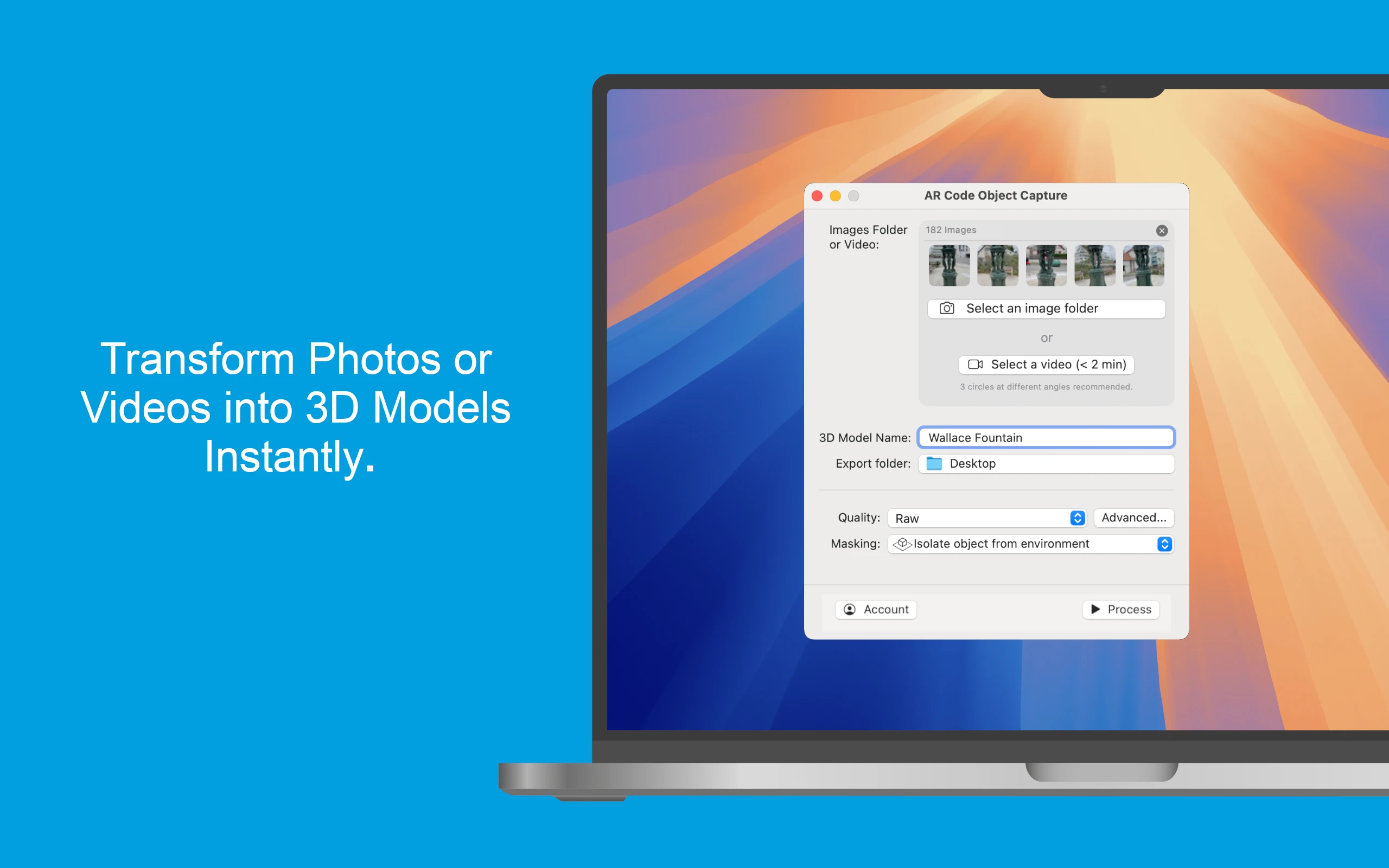
Elevate your business with the cutting-edge AR Code Object Capture app, the premier 3D scanning and augmented reality SaaS platform for enterprises. Purpose-built for MacBook M-series (macOS 15.0+), this app converts real-world products into vivid 3D models and AR QR Codes in just minutes. Seamlessly compatible across...
Personalize Your AR Codes with Innovative Design Options

AR Codes are revolutionizing business engagement by seamlessly connecting physical products, print materials, and digital content into interactive augmented reality experiences. Unlike standard QR codes, AR Codes on the AR Code SaaS platform offer advanced visual customization, transforming plain codes into vibrant,...
AR Code's Low-Power SLAM: Augmented Reality for Everyone, Everywhere

Accelerate your business growth with AR Code, the flexible SaaS platform revolutionizing accessibility and engagement in Augmented Reality for companies worldwide. Deploy dynamic AR experiences across premium and affordable devices, from flagship smartphones to entry-level Androids. AR Code’s advanced low-power SLAM...
Revolutionize Your Online Boutique with 3D Scans Using the AR Code Object Capture App

In today’s fast-paced e-commerce world, delivering immersive and interactive shopping is crucial for businesses to stand out. Online shoppers expect to experience products as vividly as in person. AR Code helps companies surpass these expectations through leading-edge Augmented Reality solutions. Using the intuitive...
AR Face Filter Creation Simplified: Boost Brand Engagement with AR QR Codes

Accelerate your brand reach and energize your marketing strategy with the AR Face Filter, an innovative augmented reality SaaS solution from AR Code. Instantly project your logo or images onto users’ faces using advanced AR and AI technology. Perfect for sports teams, event organizers, entertainment brands, and...
151,866 AR experiences
555,475 Scans per day
129,514 Creators
